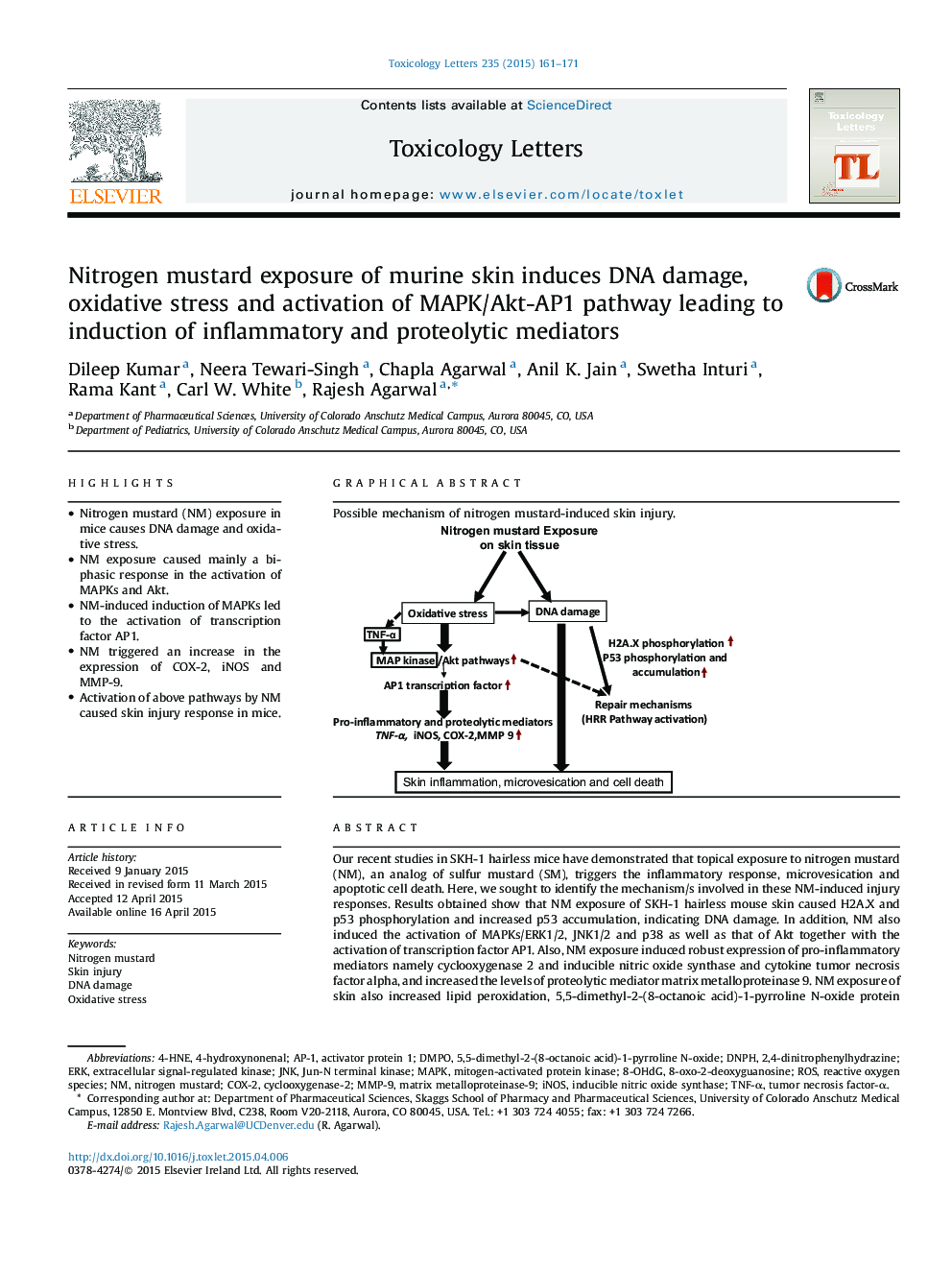| Article ID | Journal | Published Year | Pages | File Type |
|---|---|---|---|---|
| 2598832 | Toxicology Letters | 2015 | 11 Pages |
•Nitrogen mustard (NM) exposure in mice causes DNA damage and oxidative stress.•NM exposure caused mainly a bi-phasic response in the activation of MAPKs and Akt.•NM-induced induction of MAPKs led to the activation of transcription factor AP1.•NM triggered an increase in the expression of COX-2, iNOS and MMP-9.•Activation of above pathways by NM caused skin injury response in mice.
Our recent studies in SKH-1 hairless mice have demonstrated that topical exposure to nitrogen mustard (NM), an analog of sulfur mustard (SM), triggers the inflammatory response, microvesication and apoptotic cell death. Here, we sought to identify the mechanism/s involved in these NM-induced injury responses. Results obtained show that NM exposure of SKH-1 hairless mouse skin caused H2A.X and p53 phosphorylation and increased p53 accumulation, indicating DNA damage. In addition, NM also induced the activation of MAPKs/ERK1/2, JNK1/2 and p38 as well as that of Akt together with the activation of transcription factor AP1. Also, NM exposure induced robust expression of pro-inflammatory mediators namely cyclooxygenase 2 and inducible nitric oxide synthase and cytokine tumor necrosis factor alpha, and increased the levels of proteolytic mediator matrix metalloproteinase 9. NM exposure of skin also increased lipid peroxidation, 5,5-dimethyl-2-(8-octanoic acid)-1-pyrroline N-oxide protein adduct formation, protein and DNA oxidation indicating an elevated oxidative stress. We also found NM-induced increase in the homologous recombinant repair pathway, suggesting its involvement in the repair of NM-induced DNA damage. Collectively, these results indicate that NM induces oxidative stress, mainly a bi-phasic response in DNA damage and activation of MAPK and Akt pathways, which activate transcription factor AP1 and induce the expression of inflammatory and proteolytic mediators, contributing to the skin injury response by NM. In conclusion, this study for the first time links NM-induced mechanistic changes with our earlier reported murine skin injury lesions with NM, which could be valuable to identify potential therapeutic targets and rescue agents.
Graphical abstractPossible mechanism of nitrogen mustard-induced skin injury.Figure optionsDownload full-size imageDownload as PowerPoint slide
